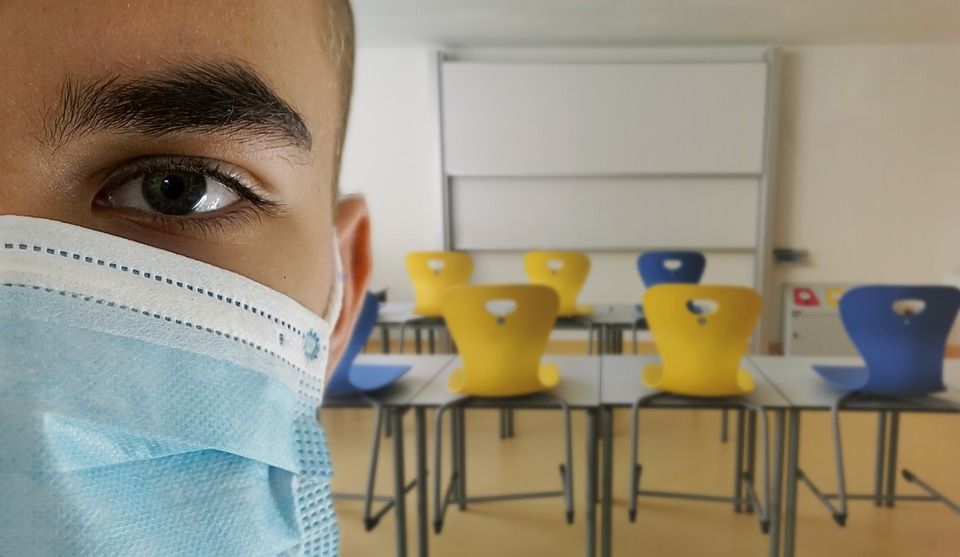When I began the school year, following the summer holiday, I had some trepidation about returning. While the case numbers were low, nobody knew what to expect from the impending cold season. I took precautions. I bought an electric bicycle for my commute each day. The one hour-each-way trip was worth avoiding the trains – those enclosed spaces with hundreds of people, maskless and spraying their aerosols around. No thank you. We had been having groceries delivered, for the most part, since March. I wanted to do everything I could to protect myself and my family from contracting COVID-19.
Good reasons for caution
These precautions were not without good reason. My wife, with cystic fibrosis, started to isolate before the announcements were made last March on the advice of her specialist. She waited it out a bit until she eventually gave up her teaching job, as she did not want to continue being a burden on the school where she was employed. Because of my wife’s disease, which is a genetic disorder that affects the lungs and other organs, but mostly the respiratory system, we had to be diligent. We had to be four times as cautious. The average life expectancy for CF is around age 37. She is 38. While she is in good health and there are CF patients who live into their senior years, the disease is unpredictable. A virus like COVID-19 could be deadly.
Support from students
When I returned to work, I wore a mask. I silently wished that everyone else wore a mask too, but it was not required, and I did not want to pressure my co-workers or make them feel uncomfortable. Not yet at least. I did eventually ask my students to wear masks. I wrote to their parents and they were happy to oblige. My students were very supportive as well. I explained that I am coming from a high-risk home. My older students even cited my family’s situation as part of their Global Perspectives team project, which was about promoting the use of masks. They did the research. They found the scientific data that shows evidence of fewer hospitalisations in areas where people wear masks. They provided the data that proves that visors and plexiglass are of no use indoors for prolonged periods.
As time went on, I began to take steps like print posters for the staffroom, promoting masks and eating away from colleagues and students. As the numbers began to increase and new restrictions unfolded, I became more and more isolated at work. With the knowledge that more people wearing masks means better protection, and the fact that most were not wearing masks, I found myself more anxious to be at work.
Respite with the lockdown
Then came the hard lockdown. While remote teaching can pose some challenges, I felt my level of anxiety diminish. It is not easy to be home all the time, but not more than stir-crazy cabin fever. I have much to be thankful for, living where I live and having the privilege to work from home. I am not in a war-torn country with guns and bombs firing off repeatedly. We are not starving. If anything, I am starting to look like my own ‘before’ picture. But schools have opened now for primary students and I believe they will soon for secondary students: the ones I teach.
Staggers belief
When I read the new guidelines from the Ministry of Children and Education, which include a ban on masks while teaching in school or in daycare institutions, I could not believe it.
Lærere, pædagoger og øvrigt personale har ret til at anvende visir i grundskolen, SFO, fritidsordning m.m., hvis de pågældende ønsker det. På grundskoleområdet gælder således, at kommuner og skoler ikke kan forbyde lærere, pædagoger og øvrigt personale at anvende visir, hvis de pågældende ønsker det. Lærere, pædagoger og øvrigt personale har ikke ret til at bære mundbind af hensyn til behovet for at kunne sikre, at elever skal kunne se og forstå personalets mimik.
The underlined states: “Teachers, pedagogues and other staff do not have the right to wear masks due to the need to ensure that students are able to see and understand the facial expressions of the staff.”
The first lines express that personnel have the right to wear visors. Despite the evidence that shows that visors are not as effective, and given the new, more contagious variants and studies that show rising numbers of children being hospitalised, how does this rule make sense? How does it consider children, parents and teachers who are vulnerable? While the theory that children will not benefit from mouths being covered is compelling, how does that trump the health and well-being of societies most vulnerable and eventually, with an impending variant that could be more deadly, the health of society as a whole?
The right to feel safe
I am fortunate enough to work at a school that allows masks, but the fact that the right to wear one can be stripped by administrators is unsettling. This rule is counterproductive. We want this disease gone and we want the vaccine to work, but if some schools may reserve the right to revoke the use of masks, and political leaders are not communicating the science, hopes for a reopening become more distant and the efficacy of vaccines may be reduced.
Beyond learning institutions, some municipalities forbid the use of masks. There seems to be either a lack of education about the up-to-date science or a lack of care from the leadership in not conveying the dangers and reality through denying people’s right to wear masks. Everyone has the right to feel safe on the job.

